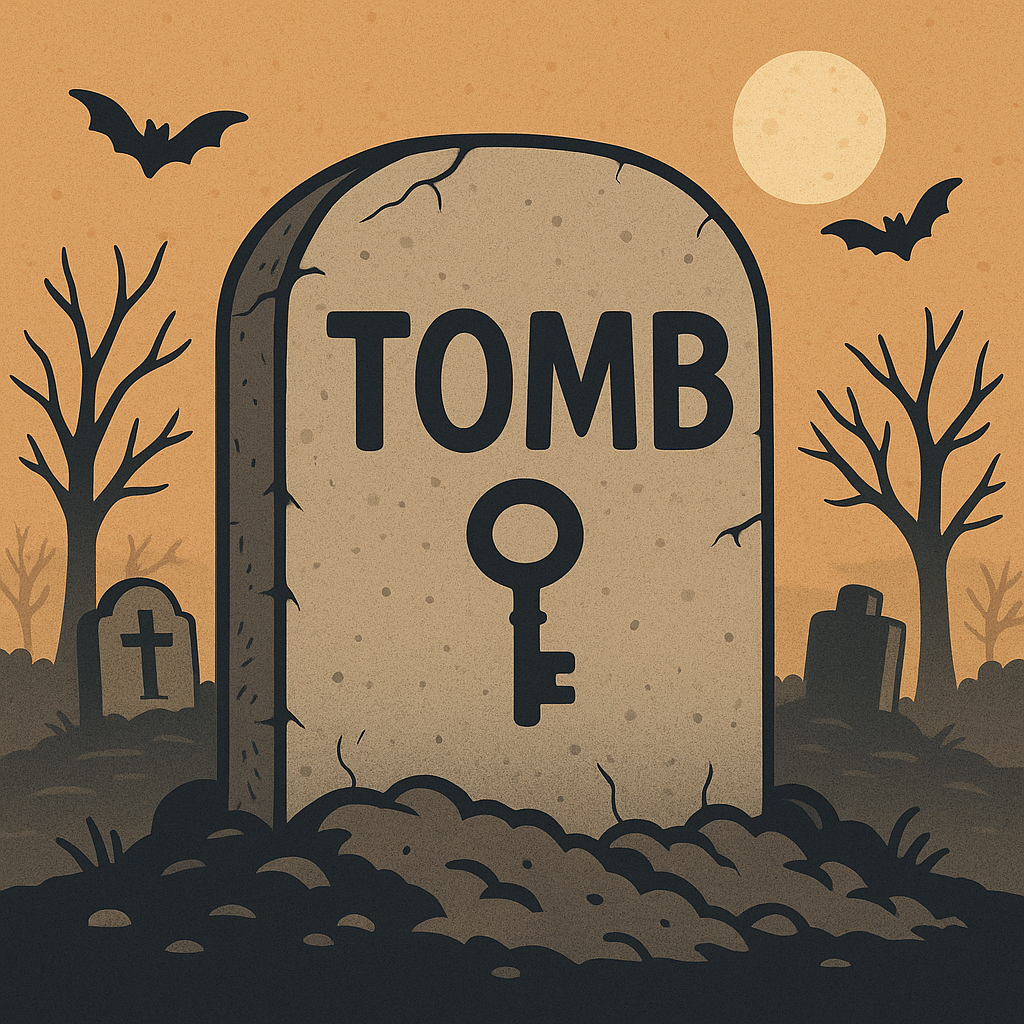🪦 Tomb: Encrypt Your Secrets Like You’re Burying Them in a Digital Graveyard#
By OuterRealm – where tech meets terror and terminal commands feel like necromancy
⚰️ INTRO: Tomb is a Haunted Graveyard for Your Files#
Picture this: you’re walking through a misty graveyard at midnight, clutching a USB stick full of forbidden PDFs and questionable selfies. You need a place to bury them—permanently, securely, and with a vibe that screams “none shall disturb these cryptic remains.”
Enter Tomb – a command-line encryption tool so gothic, it practically demands a raven perched on your monitor. It uses LUKS and GPG to lock your files in “tombs”—encrypted storage containers that sound like they should be guarded by skeletons with two-factor authentication.
Tomb doesn’t just encrypt—it entombs.
🍼 BASIC USAGE: How to Not Embarrass Yourself in the Crypt#
First, install it like you’re opening the crypt door:
sudo apt install tomb
Tomb requires tools like cryptsetup and gnupg. If those aren’t present, Tomb will sulk like a vampire without a cape.
Dig a Tomb (Prepare the digital coffin)#
tomb dig secrets.tomb -s 100
This command digs a 100MB grave for your secrets. The file secrets.tomb is now your undead vault.
Forge a Key (Conjure your magic sigil)#
tomb forge secret.key
A GPG key is your gatekeeper. Guard it like a cursed amulet.
Lock the Tomb (Seal it forever… or until you need snacks)#
tomb lock secrets.tomb -k secret.key
Now your tomb is shut tighter than Dracula’s diary.
Open the Tomb (Summon the ghostly files)#
tomb open secrets.tomb -k secret.key
Files mount at /media/tomb/secrets, like spirits appearing in the mist.
🧙 ADVANCED WIZARDRY: Grave Digger Edition#
Feeling like a cyber-necromancer? Let’s level up.
Auto-Open on Boot (A ghost that haunts every session)#
tomb open secrets.tomb -k secret.key --unsafe
–unsafe because auto-opening encrypted data is like letting the zombies roam freely. Only for private crypts.
Add More Keys (A coven of crypt-keepers)#
tomb slam secrets.tomb -k newuser.key
Perfect for shared tombs in hacker covens or spooky group projects.
Seal and Vanish (Perform the digital exorcism)#
tomb close
tomb close --all
The tomb closes, files vanish, and the moonlight returns.
📈 REAL-WORLD USAGE: Tales from the Crypt (Sysadmin Edition)#
- Journalist on the run: Encrypt source files like you’re hiding them in Edgar Allan Poe’s wine cellar.
- Sysadmin with keys to the kingdom: Keep them in a tomb so secure even Cerberus can’t get in.
- Privacy maximalist: Because nothing says “hands off” like storing your secrets in a file literally called tomb.
🦄 PROS: The Dead Rise to Praise It#
- ⚡ “Faster than a banshee on a Red Bull bender!”
- 🔒 “Encrypts like it’s casting ancient digital curses!”
- 🧠 “Shell-based brilliance with a flair for the dramatic!”
- 💀 “Finally, a file system that vibes with your goth phase!”
💔 CONS: Confessions from the Crypt#
- 😭 “GPG will haunt your dreams if misconfigured.”
- 🧩 “Minimal error messages. The silence is chilling.”
- 🔥 “Lose your keyfile? Your files are now part of the undead.”
- 🤹 “It assumes you’re already a wizard. No mortals allowed.”
🪙 CONCLUSION: Lay Your Files to Rest (Securely)#
Tomb is not your average encryption tool. It’s a digital graveyard, a place to inter your secrets, protect your dignity, and look cool doing it in front of the other Linux cultists.
Visit the official crypt here: https://www.dyne.org/software/tomb/
Encrypt responsibly. Bury wisely. And never leave your key in the open… unless you enjoy the sound of ghosts whispering “noob” in your ear.
🤡 DAD JOKE OUTRO#
What do you call a skeleton that encrypts your files?
A cryptographer!
